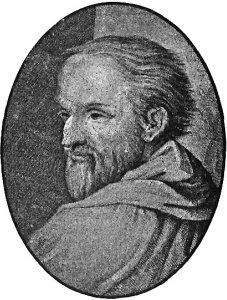(Correggio 1489 - 1534)
Antonio Allegri da Correggio, also known as Il Correggio, was an Italian painter from The Renaissance and the maximum representative of the Parma School.
Correggio’s affectionate and passionate temperament and his large and voluptuous invention were like a counterpoint to the solemn art of the Roman genius. This artist showed a beauty that was filled with charm and emotion and had a big significance during the baroque period and during the eighteenth century.
In Mantua, he met Mantegna’s works, which gave him the idea of brave foreshortenings, and Costa’s works whose syncretism he exceeded since his first artworks (Madonna di San Francesco, 1515, Dresden).
In Parma, where he went at the request of the abbess Giovanna da Piacenza, he decorated the vault of the Nunnery of St. Paul with garlands of fruits and half moons (lunette) made of grisaille, mythological deities and medallions with “putti” (little angels). These frescoes were very successful and they meant for Correggio the order of important decorations in the church of St. John Evangelist. He decorated the apse and the dome with frescoes that spread out as a stunning and golden vision, where the apostles, in a marked foreshortening, are grouped together forming a crown around Christ.
Correggio also decorated the octagonal dome of the Cathedral of Parma with the frescoes Assumption of the Virgin. The silhouettes of the apostles adorn the base of the dome between the oculus, and the angels and the chosen ones appear in concentric circles and they crowd together in the clouds. In this painting, Correggio created a fluent and luminous world without well-defined or clear outlines. Towards 1530, he painted for the castle of Mantua the artworks Abduction of Ganymede (Vienna), Leda with the Swan (Berlin), and Danäe (Rome, Galleria Borguese). The shapes that appear in these artworks are shrouded in a chiaroscuro that intensifies and makes stronger the colours.
In the paintings he realized in the altar, the unpleasant effect caused by the agitation of the forms and certain familiarities of the details is dimmed by a new impulse given by the composition, which is organized diagonally. It can be observed in Madonna of St. Jerome (or The Day, in Parma) and Nativity (or Holy Night, in Dresden).
Two paintings by Correggio are in El Prado Museum (Madrid). One of these artworks is Noli Me Tangere, which was painted toward 1525 and was given as a present to Philip II by the Duke of Medina. The other one is Madonna and Child with the Young Saint John, which is dated before, that belongs to Isabel Farnesio. A painting of Saint Jerome is preserved in La Academia de San Fernando in Madrid.


